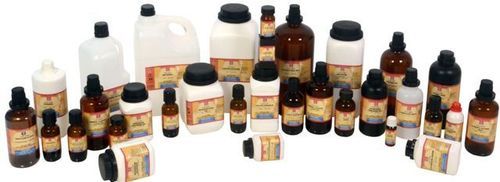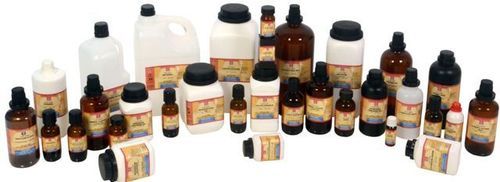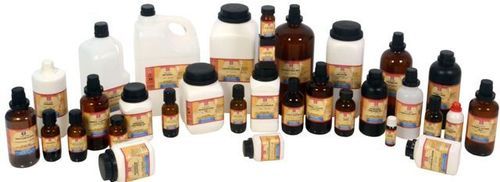Tributyltin Acetate
Product Details:
X
Product Description
Tributyltin Acetate
LC5570 Tributyltin acetate
for synthesis
| Order number | Packaging | Quantity | Price |
| AC32570 | Glass bottle | 50 g | 45.00 |
| Product information | |
| Synonyms | Acetoxytributyltin |
| Hill Formula | C14H30O2Sn |
| Chemical formula | (CH3CH2CH2CH2)3SnOOCCH3 |
| HS Code | 2931 00 99 |
| EC number | 200-269-6 |
| Molar mass | 349.07 g/mol |
| EC index number | 050-008-00-3 |
| CAS number | 56-36-0 |
| Chemical and physical data | |
| Solubility | 0.065 g/l (20 C) |
| Melting point | 79 - 82 C |
| Molar mass | 349.07 g/mol |
| Vapor pressure | 0.001 hPa (20 C) |
| Flash point | 120 C |
| Safety information according to GHS | |
| Hazard Statement(s) | H301: Toxic if swallowed. H312: Harmful in contact with skin. H315: Causes skin irritation. H319: Causes serious eye irritation. H372: Causes damage to organs through prolonged or repeated exposure. H410: Very toxic to aquatic life with long lasting effects. |
| Precautionary Statement(s) | P273: Avoid release to the environment. P302 + P352: IF ON SKIN: Wash with plenty of soap and water. P305 + P351 + P338: IF IN EYES: Rinse cautiously with water for several minutes. Remove contact lenses, if present and easy to do. Continue rinsing. |
| Signal Word | Danger |
| Hazard Pictogram(s | |
| RTECS | WH5775000 |
| Storage class | 6.1A Combustible substances, toxic |
| WGK | WGK 3 highly water endangering |
| Disposal | 15 Heavy metal-containing solutions and solids: container E. Stir Raney nickel (also: Urushibara nickel) in the form of an aqueous suspension into hydrochloric acid (Cat. No. 100312) until dissolved (container E). Neither Raney nickel itself nor any filter residues should be allowed to dry out, otherwise they will spontaneously ignite in air. In this context, heavy metal means any compound of antimony, arsenic, cadmium, chromium(VI), copper, lead, nickel and tin, as well as these subtances in metallic form, if they are classified as hazardous (acc. to AbfallverzeichnisV - Waste Catalogue Ordinance, Appendix 3). Other heavy metals should be collected separately. |
| Safety information | |
| R Phrase | R 21-25-36/38-48/23/25-50/53 Harmful in contact with skin.Toxic if swallowed.Irritating to eyes and skin.Toxic: danger of serious damage to health by prolonged exposure through inhalation and if swallowed.Very toxic to aquatic organisms, may cause long-term adverse effects in the aquatic environment. |
| S Phrase | S 35-36/37/39-45-60-61 This material and its container must be disposed of in a safe way.Wear suitable protective clothing, gloves and eye/face protection.In case of accident or if you feel unwell, seek medical advice immediately (show the label where possible).This material and its container must be disposed of as hazardous waste.Avoid release to the environment. Refer to special instructions/ Safety data sheets. |
| Categories of danger | toxic, irritant, dangerous for the environment |
| Hazard Symbol | Toxic Dangerous for the environment |
| Transport information | |
| Declaration (transport by sea) IMDG-Code | UN 3146 ORGANOTIN COMPOUND, SOLID, N.O.S.(TRIBUTYLTIN ACETATE), 6.1, III, Marine Pollutant: P |
| Declaration (transport by air) IATA-DGR | UN 3146 ORGANOTIN COMPOUND, SOLID, N.O.S.(TRIBUTYLTIN ACETATE), 6.1, III |
| Toxicological data | |
| LD 50 oral | LD50 rat 99 mg/kg |
| Specifications | |
| Assay (ex Sn) | 97 % |
| Melting range - lower value | 79 C |
| - upper value | 82 C |
| Identity (IR) | passes test |
Tell us about your requirement

Price:
Quantity
Select Unit
- 50
- 100
- 200
- 250
- 500
- 1000+
Additional detail
Mobile number
Email
Other Products in 'Laboratory Chemicals' category
We are deals in Lab Chemicals.
"Only deals in retail accepting orders upto 500ml only".
"Only deals in retail accepting orders upto 500ml only".
 |
ALPHA CHEMIKA
All Rights Reserved.(Terms of Use) Developed and Managed by Infocom Network Private Limited. |
 English
English Spanish
Spanish French
French German
German Italian
Italian Chinese (Simplified)
Chinese (Simplified) Japanese
Japanese Korean
Korean Arabic
Arabic Portuguese
Portuguese










